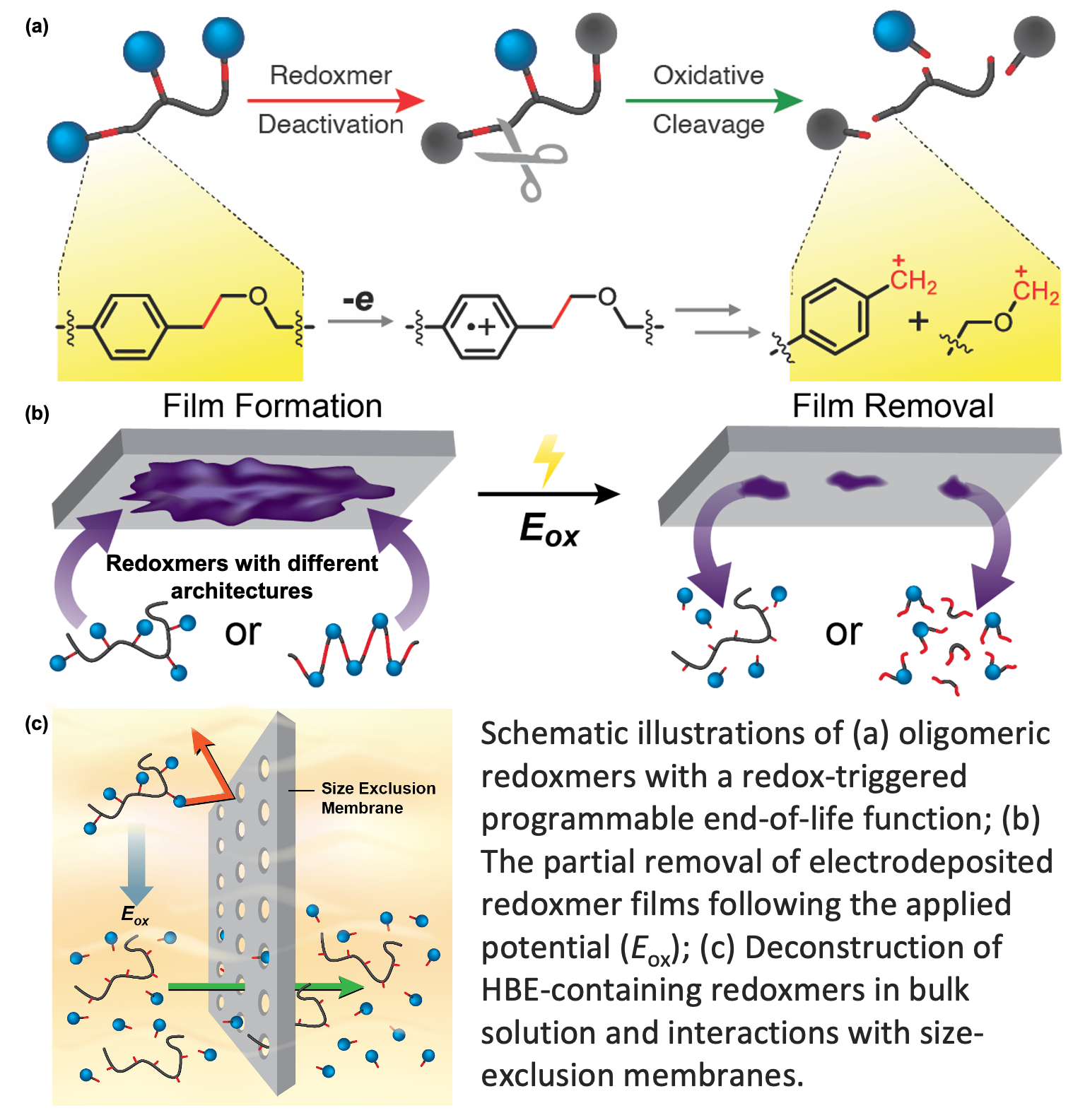
Scientific Achievement
We successfully added an end-of-life function into redoxmers whereby deconstruction is controlled by a redox-triggered mesolytic cleavage of HBE linkages. Using a combined experimental and computational approach, we thoroughly investigated HBE degradation mechanisms, fragmentation pathways, electrochemical properties, and programmable deconstruction of HBE-containing redoxmers from an interface and in bulk solution.
Significance and Impact
Our findings suggest that oxidative cleavage of HBEs facilitate redoxmer-film removal from an interface and bulk deconstruction of redoxmers in solution. Developing redoxmers with programmable deconstruction capabilities improved the resilience of redoxmer-based energy storage materials; this is an important step in development of sustainable energy storage materials for redox flow batteries (RFBs).
Research Detail
- We synthesized a series of para-substituted HBEs and incorporated them into redox monomers, dimers, and polymers.
- Experimental and computational results by GC-MS, CV, generation-collection techniques, BE, and DFT revealed mechanistic insights of HBE degradation pathways.
- We evaluated programmable deconstruction of HBE-containing branched and main-chain redox active polymers at electrode interfaces and in bulk solutions.
- We presented the vision of end-of-life function in a practical RFB.

